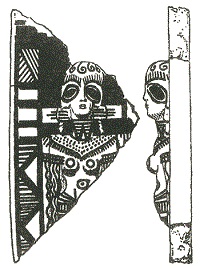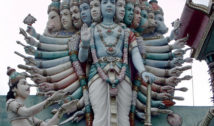Today Christians and Wiccans Celebrate Lammas/Lughnasadh
- By Alison Lesley --
- 01 Aug 2016 --
Celebrating Lammas/Lughnasadh, the year’s grain harvest and the cycle of life and death.
One of the few holidays or festivals that is celebrated across cultures and religions is Lammas otherwise known as Lughnasadh. For early Christians, and pagans, it’s the very first harvest festival of the year. For Celtics and other Neopagans, the holiday gives honor to Lugh who is the sun god. For early Sumerians, it is linked with the story of gods Dumuzid and Inanna and about grains association with the cycle of life and death. And with Greek mythology, it features the love story of grain god Adonis. The Lammas or Lughnasadh festival is celebrated annually on August 1.
Today Christians and Wiccans Celebrate Lammas/Lughnasadh.[/tweetthis]
Celebrating the start of the harvest season

For early Christians and in the Anglo-Saxon tradition, Lammas is the festival of wheat harvest and feast of bread. The bread baked from the newly harvested wheat is brought to the church for blessings. There’s also a tradition among tenants to offer the first fruits of crops and trees to their landlords on the first day of August.
Honoring the Celtic god Lugh

Significance of the festivity
Although fewer groups and communities today are celebrating the holiday, its symbolic significance has never dwindled. In the past, farmers had to render back-breaking work and often have to rely on nature or even luck just to have a good harvest capable of feeding communities for the entire year ahead. Lammas is a way of remembering the past agricultural hardships and innovations. It’s a time to give thanks to nature which constantly gives food to its inhabitants. Fresh produce and other food items may now be readily accessible through the various groceries and supermarkets compared before, but still, such goods are essentially fruits of hard labor.
Today is Lammas, the earliest Anglo-Saxon festival of the harvest. 'An Anglo-Saxon August': https://t.co/ZauABxQYRc pic.twitter.com/6k2aucFMhs
— Eleanor Parker (@ClerkofOxford) August 1, 2016
Activities
Feasting and general merrymaking through songs, arts and crafts are observed by many Wiccans or pagans today. Certain communities still bring their bread and harvests to church for blessings. Many believed that placing pieces of bread around the corners of the barn will ensure a good harvest for next year. Some also decorate their homes using fresh produce and farming tools. Others hold events showcase individual talents on this day.
Happy Lammas, pagans and witches of the Internet! It's our first harvest festival, the late summer one.
— Andrea Lambert (@AndreaLamber) August 1, 2016
Happy #Lughnasadh 2016. pic.twitter.com/TWVATzXRwH
— Frank Jamger (@FrankJ1232) August 1, 2016



















